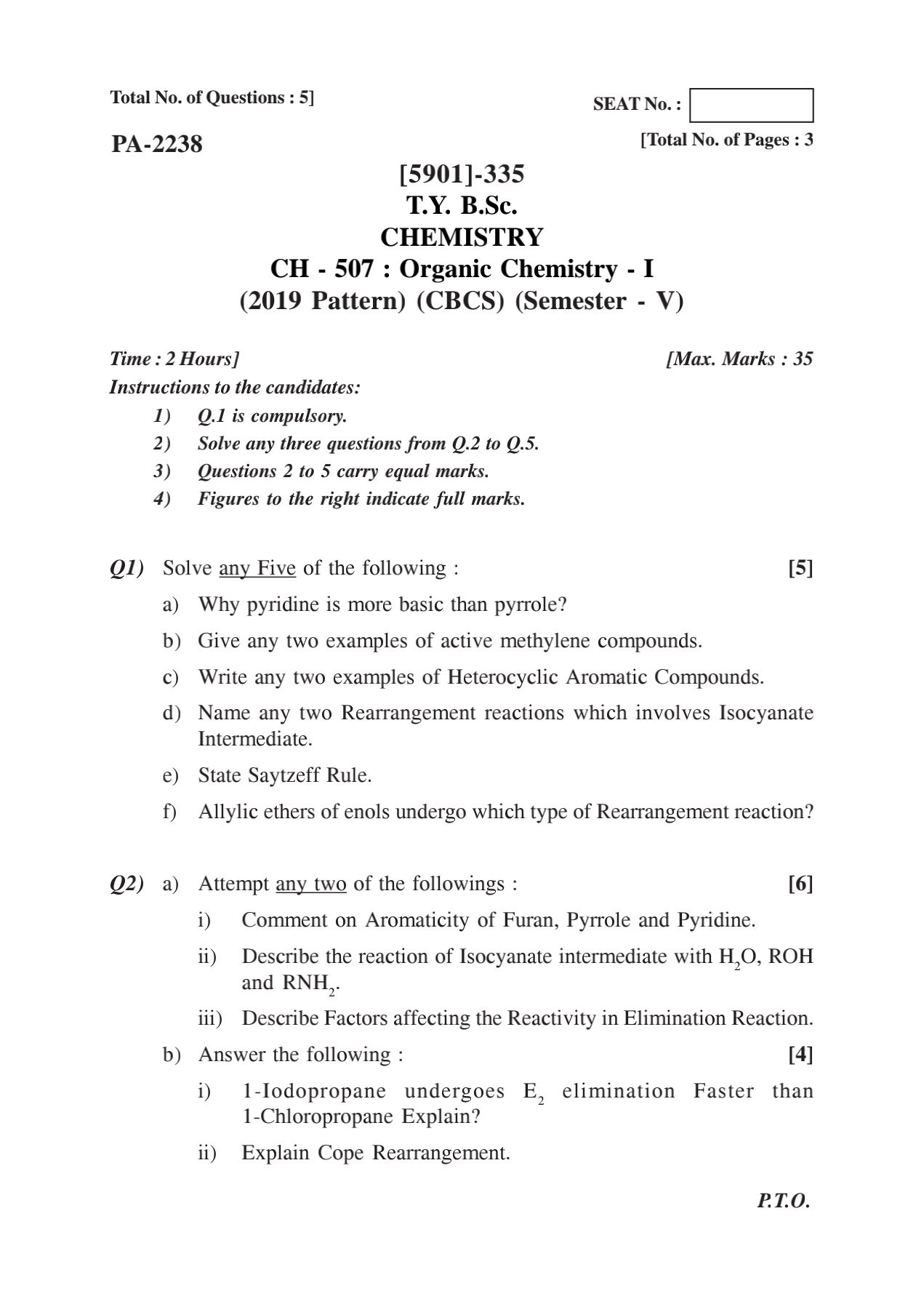Solve any five of the following: a) Why is pyridine more basic than pyrrole? b) Give any two examples of active methylene compounds. c) Write any two examples of Heterocyclic Aroma... Solve any five of the following: a) Why is pyridine more basic than pyrrole? b) Give any two examples of active methylene compounds. c) Write any two examples of Heterocyclic Aromatic Compounds. d) Name any two Rearrangement reactions which involve Isocyanate Intermediate. e) State Saytzeff Rule. f) Allylic ethers of enols undergo which type of Rearrangement reaction? Additionally, attempt any two of the followings: i) Comment on Aromaticity of Furan, Pyrrole and Pyridine. ii) Describe the reaction of Isocyanate intermediate with H2O, ROH and RNH2. iii) Describe Factors affecting the Reactivity in Elimination Reaction. Also answer the following: i) 1-Iodopropane undergoes E2 elimination faster than 1-Chloropropane. Explain? ii) Explain Cope Rearrangement.

Understand the Problem
The question appears to be a chemistry exam paper covering topics related to organic chemistry, specifically regarding basicity, reaction mechanisms, and aromaticity. The questions ask for comparisons, examples, and explanations of various organic chemistry concepts.
Answer
a) Pyridine's lone pair is not involved in aromaticity, unlike pyrrole's. b) Malonic and acetoacetic esters. c) Pyridine, Furan. d) Hofmann and Curtius rearrangements. e) Saytzeff Rule favors highly substituted alkenes. f) Claisen rearrangement.
a) Pyridine is more basic than pyrrole because pyridine's lone pair is not involved in aromaticity, making it more available for protonation. b) Examples of active methylene compounds include malonic ester and acetoacetic ester. c) Examples of heterocyclic aromatic compounds: pyridine and furan. d) Rearrangement reactions with isocyanate intermediates: Hofmann rearrangement and Curtius rearrangement. e) Saytzeff Rule states that in elimination reactions, the most substituted alkene is favored. f) Allylic ethers of enols undergo Claisen rearrangement.
Q2) i) Pyrrole and furan are aromatic; pyrrole's lone pair contributes to aromaticity, while pyridine's doesn't, making it more basic. ii) Isocyanate reacts with water to form amine and CO2, with alcohol forms carbamate, and with amine forms urea. iii) Factors affecting reactivity in elimination reactions include the nature of the leaving group, base strength, and steric hindrance.
1-Iodopropane undergoes E2 elimination faster than 1-chloropropane due to iodide being a better leaving group. Cope rearrangement is a [3,3]-sigmatropic rearrangement of 1,5-dienes.
Answer for screen readers
a) Pyridine is more basic than pyrrole because pyridine's lone pair is not involved in aromaticity, making it more available for protonation. b) Examples of active methylene compounds include malonic ester and acetoacetic ester. c) Examples of heterocyclic aromatic compounds: pyridine and furan. d) Rearrangement reactions with isocyanate intermediates: Hofmann rearrangement and Curtius rearrangement. e) Saytzeff Rule states that in elimination reactions, the most substituted alkene is favored. f) Allylic ethers of enols undergo Claisen rearrangement.
Q2) i) Pyrrole and furan are aromatic; pyrrole's lone pair contributes to aromaticity, while pyridine's doesn't, making it more basic. ii) Isocyanate reacts with water to form amine and CO2, with alcohol forms carbamate, and with amine forms urea. iii) Factors affecting reactivity in elimination reactions include the nature of the leaving group, base strength, and steric hindrance.
1-Iodopropane undergoes E2 elimination faster than 1-chloropropane due to iodide being a better leaving group. Cope rearrangement is a [3,3]-sigmatropic rearrangement of 1,5-dienes.
More Information
Pyridine, with an electron pair available for bonding, behaves as a stronger base compared to pyrrole, where the electron pair contributes to its aromatic nature.
Tips
Avoid confusing aromatic contribution of nitrogen's electron pair in pyrrole with its contribution in pyridine.
Sources
AI-generated content may contain errors. Please verify critical information